Unveiling Zimbabwe’s Treasures: National Archives, Bvumba Mountains, and Chiremba Rocks
Introduction:
Located in the heart of Harare, the National Archives of Zimbabwe serves as a custodian of the nation’s collective memory, housing a vast repository of historical documents, photographs, and records that chronicle Zimbabwe’s rich cultural heritage and tumultuous journey to nationhood. In this article, we explore the significance of the National Archives and its role in preserving the past, shaping the present, and inspiring future generations.
Preserving Cultural Heritage:
The National Archives of Zimbabwe plays a crucial role in preserving the country’s cultural heritage by collecting, cataloging, and safeguarding a diverse range of archival materials. From colonial-era documents and independence-era memorabilia to oral histories and traditional artifacts, the archives provide a comprehensive record of Zimbabwe’s history, traditions, and identity.
Access to Information:
One of the primary functions of the National Archives is to provide access to information for researchers, scholars, students, and the general public. The archives offer a wealth of resources for those seeking to delve into Zimbabwe’s past, including government records, newspapers, maps, and personal papers. By facilitating access to these materials, the archives promote transparency, accountability, and historical scholarship.
Historical Research and Scholarship:
The National Archives of Zimbabwe serves as a hub for historical research and scholarship, providing a valuable resource for academics, historians, and students. Researchers can explore a wide range of topics, from precolonial history and colonial rule to the struggle for independence and post-independence development. The archives also support interdisciplinary research initiatives and collaborative projects that advance our understanding of Zimbabwe’s past.

Preservation and Conservation:
Preserving fragile and deteriorating materials is a top priority for the National Archives, which employs specialized techniques and technologies to ensure the long-term survival of its collections. Conservation efforts include digitization projects, climate-controlled storage facilities, and restoration work to repair damaged documents and artifacts. By safeguarding these materials, the archives ensure that future generations will have access to their shared heritage.
Promoting Cultural Awareness:
Through exhibitions, educational programs, and public outreach initiatives, the National Archives of Zimbabwe promotes cultural awareness and appreciation among diverse audiences. Special events, lectures, and workshops offer opportunities for visitors to engage with archival materials, learn about Zimbabwean history and culture, and participate in activities that celebrate the country’s heritage.
Location: Borrowdale Road, Gunhill, Harare, Zimbabwe
Correspondence Address: Private Bag 7729, Causeway, Harare
Contact Information:
- Telephone: 792741
- Email: archives@gta.gov.zw
- Website: Visit website (Link not provided)
Opening Hours:
- Monday to Friday: 8:30 AM – 4:00 PM
- Saturday: 8:00 AM – 12:00 PM
Requirements:
- Proof of identity is required for access to the archives.
- Foreign researchers must obtain a research permit (US$ 200) or a temporary work permit before conducting research in Zimbabwe.
ARCHON Code: 735
Note: If you are an archivist or custodian of this archive, you can use the archive update form to add or update details in Discovery.
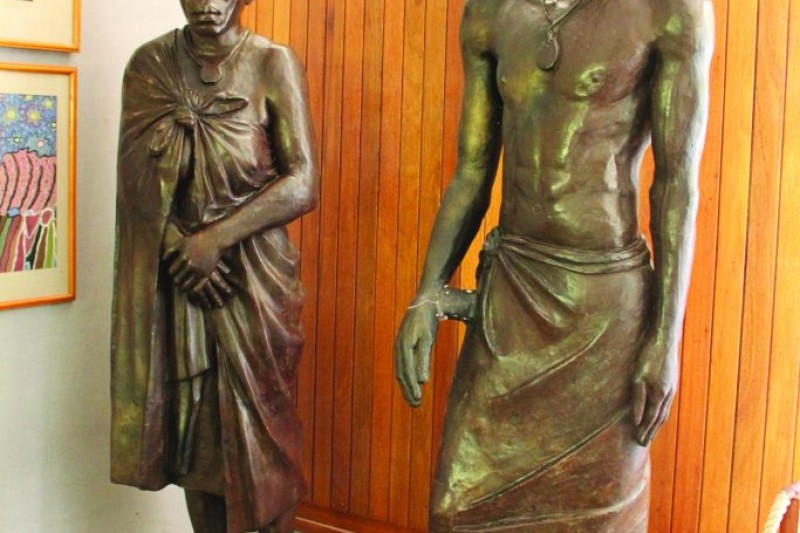
Conclusion:
As a custodian of Zimbabwe’s cultural memory, the National Archives plays a vital role in preserving, promoting, and sharing the nation’s rich heritage with the world. By providing access to historical records, supporting research and scholarship, and fostering cultural awareness, the archives contribute to the ongoing dialogue about Zimbabwe’s past, present, and future. As custodians of this invaluable resource, it is our collective responsibility to ensure that the legacy preserved within the National Archives of Zimbabwe continues to inspire and enlighten generations to come.
Bvumba Mountains: Zimbabwe’s Hidden Gem
Introduction:
Nestled in the eastern highlands of Zimbabwe, the Bvumba Mountains stand as a picturesque paradise of lush forests, misty valleys, and breathtaking vistas. Often referred to as Zimbabwe’s “hidden gem,” the Bvumba Mountains offer visitors a tranquil retreat from the hustle and bustle of city life, with their pristine beauty and rich biodiversity. In this article, we delve into the allure of the Bvumba Mountains and the experiences they offer to nature lovers and adventurers alike.
Natural Beauty and Biodiversity:
The Bvumba Mountains are renowned for their stunning natural beauty, characterized by rolling hills, verdant forests, and cascading waterfalls. The region’s high rainfall and temperate climate create ideal conditions for a diverse array of flora and fauna to thrive, including rare orchids, colorful butterflies, and an abundance of birdlife. Visitors to the Bvumba Mountains can explore the network of hiking trails that wind through the forests, offering opportunities to discover hidden waterfalls, panoramic viewpoints, and secluded picnic spots.
Botanical Gardens and Arboretums:
One of the highlights of the Bvumba Mountains is the presence of several botanical gardens and arboretums, showcasing the region’s rich botanical diversity. The Bvumba Botanical Reserve, in particular, is a haven for plant enthusiasts, featuring a wide variety of indigenous and exotic species, including azaleas, rhododendrons, and camellias. Visitors can wander through the beautifully landscaped gardens, marveling at the vibrant colors and fragrant blooms that adorn the hillsides.
Birdwatching and Wildlife Viewing:
The Bvumba Mountains are a paradise for birdwatchers, with over 200 species of birds recorded in the region. Ornithologists and bird enthusiasts flock to the mountains to catch glimpses of rare and endemic species, such as the blue swallow, the white-starred robin, and the Chirinda apalis. Wildlife enthusiasts can also spot a variety of mammals, including samango monkeys, bushbuck, and duikers, as well as reptiles and amphibians that inhabit the mountain forests.
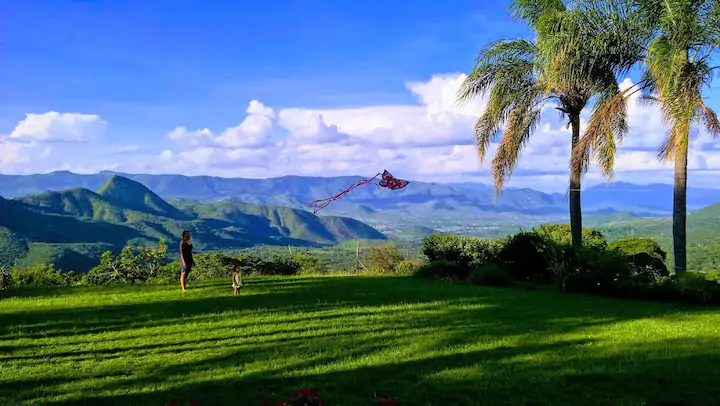
Cultural Heritage and Community Tourism:
In addition to its natural attractions, the Bvumba Mountains are also home to vibrant local communities and cultural heritage sites. Visitors can immerse themselves in the rich traditions and customs of the indigenous communities that call the mountains home, learning about traditional farming practices, crafts, and rituals. Community tourism initiatives offer opportunities for cultural exchanges, homestays, and guided tours led by local guides, providing insights into the everyday lives of the people who live in the shadow of the mountains.
Sustainable Tourism and Conservation:
As tourism in the Bvumba Mountains continues to grow, efforts are underway to promote sustainable practices and conservation initiatives that protect the region’s fragile ecosystems. Local communities, government agencies, and conservation organizations work together to preserve the natural beauty and biodiversity of the mountains, while also supporting community development and eco-friendly tourism initiatives.
Access:
- Zimbabwean Side: Accessible via a well-maintained tarred road from Mutare, offering convenient access to the enchanting landscapes of the Bvumba Mountains.
- Mozambican Side: Accessible from a road leading to the Vumba Water Bottling Plant, branching off from the main EN6 highway just west of Manica, Mozambique.
Mountain Hikes:
- Castle Beacon: Embark on a challenging hike up a large granite dome to reach the prominence of Castle Beacon. Experience the transition from misty sub-montane vegetation on the lower slopes to panoramic vistas atop the summit.
- Vumba Mountain: On the Mozambique side, venture on a steep hike to the summit of Vumba Mountain, rewarded with sweeping views of Manica and its surrounding landscapes.
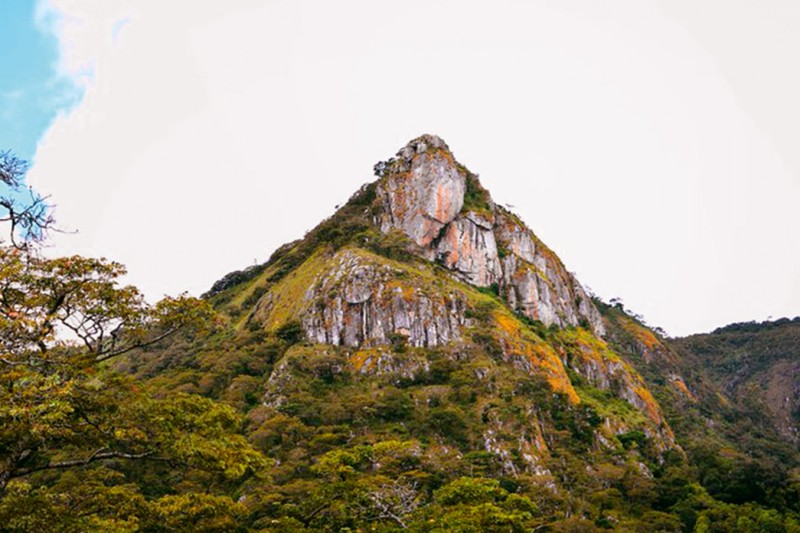
Geology:
- Composed mainly of granite, the Bvumba Mountains form the eastern margin of the Zimbabwe Craton, with granite formations dating back over 2,600 million years. Intrusions of Umkondo dolerite sills add to the geological diversity of the region.
Flora:
- Explore a diverse array of savannah woodland dominated by Brachystegia/miombo, sub-montane grasslands, mist-belts adorned with mosses and ferns, and sub-montane evergreen forests nestled within ravines. Discover rare shrubs such as proteas, aloes, and Strelitzia adorning the higher elevations.
- Visit the Bunga Forest Botanical Reserve and Bvumba Botanical Garden, home to a rich collection of cycads, including several rare species.
Fauna:
- Encounter a plethora of biodiversity, from rare butterflies to diverse bird species. Marvel at the Swynnerton’s robin, Livingstone’s turacos, and the elusive samango monkey. Keep an eye out for the majestic leopard and unique reptiles like Marshall’s leaf chameleon and Arnold’s skink.
Archaeology:
- Delve into the cultural heritage of Chinhamapere Hill, adorned with well-preserved Iron Age rock art paintings dating back around 8,000 years. Explore contemporary ritual sites used for rainmaking, divining, and healing, offering a glimpse into ancient traditions.
World Heritage Status:
- Designated as a UNESCO World Heritage Tentative List site in 2008, the Bvumba Mountains showcase cultural significance proposed by Mozambique, highlighting its rich archaeological and ecological value.
Embark on an unforgettable journey into the heart of the Bvumba Mountains, where natural wonders and cultural heritage converge to create an immersive experience unlike any other.
Conclusion:
From its mist-shrouded forests to its vibrant cultural heritage, the Bvumba Mountains offer a wealth of experiences for visitors seeking adventure, tranquility, and connection with nature. Whether hiking through ancient forests, birdwatching in botanical gardens, or exploring local communities, the Bvumba Mountains invite travelers to discover the hidden treasures of Zimbabwe’s eastern highlands and create memories that will last a lifetime.
Chiremba / Epworth Balancing Rocks: Zimbabwe’s Geological Wonders
Introduction:
Nestled within the suburbs of Epworth, near the bustling city of Harare, Zimbabwe, lies a geological wonder known as the Chiremba / Epworth Balancing Rocks. These natural formations, characterized by their precarious balance and striking beauty, have captured the imagination of locals and visitors alike for generations. In this article, we explore the fascinating story behind these iconic landmarks and their significance to the people of Zimbabwe.
Formation and Geological Significance:
The Chiremba / Epworth Balancing Rocks are the result of millions of years of geological processes, shaped by the forces of erosion, weathering, and tectonic activity. Composed primarily of granite, these colossal boulders have been sculpted into their distinctive shapes by the relentless forces of nature, creating a landscape that is both awe-inspiring and surreal.
Cultural and Spiritual Importance:
For the people of Zimbabwe, the Chiremba / Epworth Balancing Rocks hold deep cultural and spiritual significance. Revered as sacred sites by indigenous communities, these natural formations are often associated with ancient folklore, myths, and legends. Many believe that the rocks are inhabited by ancestral spirits, serving as guardians of the land and symbols of strength and resilience.
Tourism and Recreation:
Despite their proximity to urban areas, the Chiremba / Epworth Balancing Rocks remain pristine havens of natural beauty, attracting tourists, hikers, and nature enthusiasts from far and wide. Visitors can explore the surrounding area on guided walks, marveling at the intricate patterns and textures of the rock formations while immersing themselves in the tranquility of the Zimbabwean landscape.
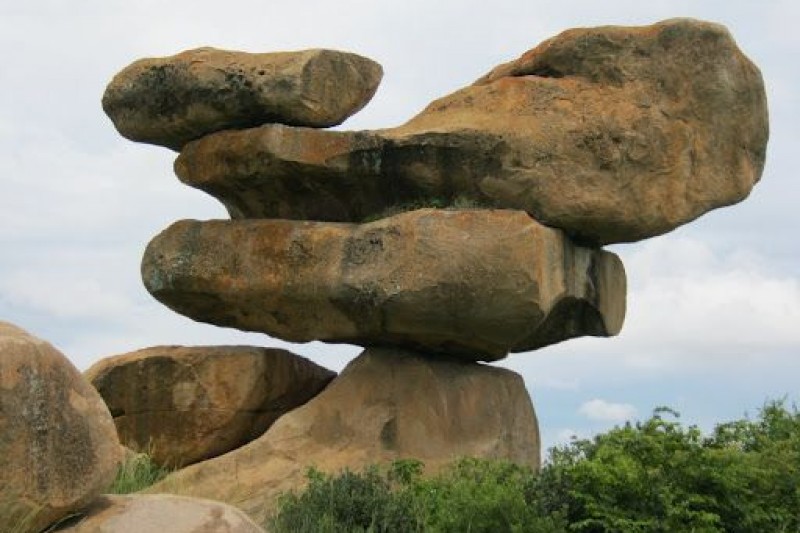
Conservation and Preservation:
Efforts are underway to protect and preserve the Chiremba / Epworth Balancing Rocks for future generations to enjoy. Conservation initiatives aim to safeguard these natural wonders from encroaching development and environmental degradation, ensuring that they remain intact for years to come. Additionally, educational programs raise awareness about the importance of preserving Zimbabwe’s geological heritage and fostering a sense of stewardship among local communities.
Inspiration for Art and Creativity:
The Chiremba / Epworth Balancing Rocks have long served as a source of inspiration for artists, poets, and writers, who draw upon their timeless beauty and enigmatic presence in their creative works. From paintings and sculptures to literature and music, these iconic landmarks have left an indelible mark on Zimbabwean culture, inspiring generations of artists to celebrate the natural world.
Why Visit:
- Extraordinary Geological Formations: Witness the awe-inspiring spectacle of unique rock formations, reminiscent of those found in the renowned Matobo National Park near Bulawayo, albeit on a smaller scale.
- Proximity to Harare: Conveniently located close to Harare, these balancing rocks offer an accessible escape into nature’s wonders without venturing far from urban centers.
- Enigmatic San Rock Art: Explore the intriguing San rock art sites, showcasing vivid depictions of ancient life and culture. The well-preserved artwork provides insight into the original paint colors and intricate techniques of San painters.
- Preservation Efforts: Managed by the National Museums and Monuments of Zimbabwe (NMMZ), the site is meticulously cared for amidst the encroaching pressures of urbanization, ensuring its conservation for future generations.
How to Get Here: Navigate to the junction of Glenara Avenue / Chiremba Road and proceed along Chiremba Road for approximately 7.4 kilometers. Pass through the suburbs of Queensdale, Chadcombe, Hatfield, and Park Meadowlands until reaching Epworth. Look for the prominent Domboramwarwi rock on the right, followed by the unmistakable Balancing Rocks on the left, with a turnoff marked by a signpost from the National Museums and Monuments of Zimbabwe.
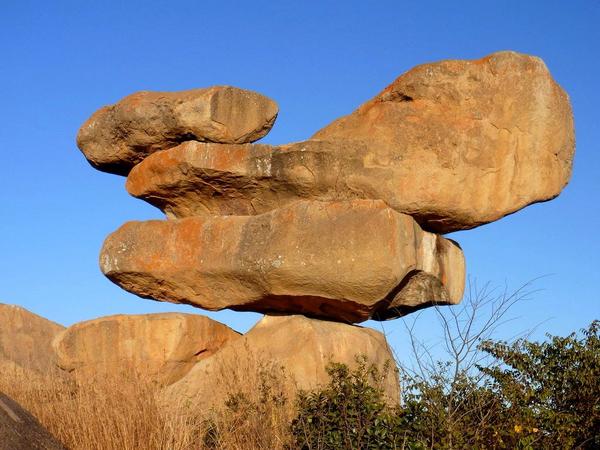
GPS Reference: 17⁰53′13.46″S 31⁰07′29.12″E
Geological Insight: Discover the fascinating geological processes behind the formation of these remarkable granite formations. Crafted billions of years ago from volcanic activity, the enduring hardness of granite juxtaposes against the softer surrounding rocks, resulting in the iconic balancing rocks. Witness the intricate patterns of onion skin weathering and exfoliation, revealing nature’s artistic handiwork.
Cultural Significance: Declared a National Monument in 1994, the Chiremba / Epworth Balancing Rocks symbolize the enduring peace and stability of Zimbabwe’s economy, despite their depiction on the infamous one hundred trillion Dollar note during the nation’s period of hyperinflation.
Visitor Information:
- Epworth Mission: Established in 1890 as a Methodist Mission Station, Epworth has grown rapidly in recent years, attracting visitors with its rich history and vibrant community life.
- Picnic Activities: Enjoy leisurely picnics amidst the serene surroundings of the balancing rocks, providing opportunities for relaxation and rejuvenation.
- Weekend Events: Experience the lively atmosphere of weddings and children’s birthday parties, adding vibrancy to weekend visits.
When to Visit: Open all year round, Monday to Sunday, from 8 am to 5 pm.
Fee: An entrance fee is applicable for visitors.
Category: Scenic, Geological, Rock Art
Province: Harare
Embark on a journey of exploration and discovery at the Chiremba / Epworth Balancing Rocks, where nature’s wonders and cultural heritage converge to captivate the imagination and inspire awe.
Conclusion:
The Chiremba / Epworth Balancing Rocks stand as silent sentinels of Zimbabwe’s geological heritage, bearing witness to the passage of time and the enduring power of nature. As symbols of resilience, spirituality, and natural beauty, these remarkable formations continue to captivate the hearts and minds of all who encounter them, serving as reminders of the profound connection between hu
